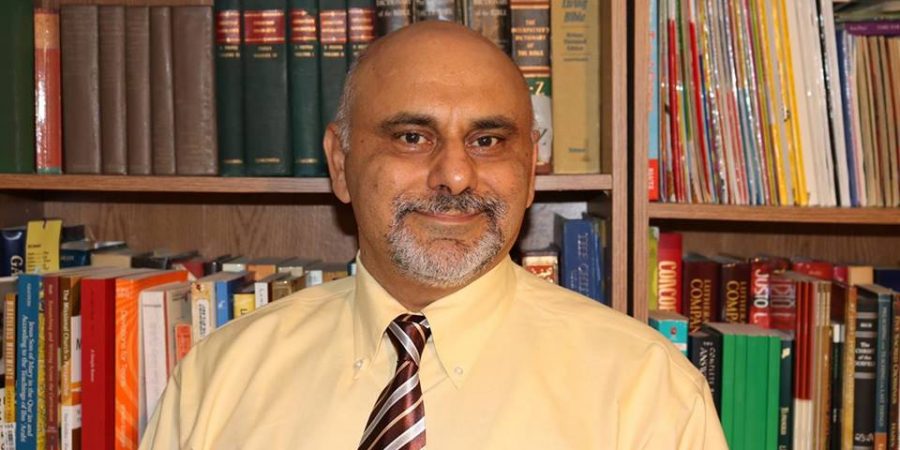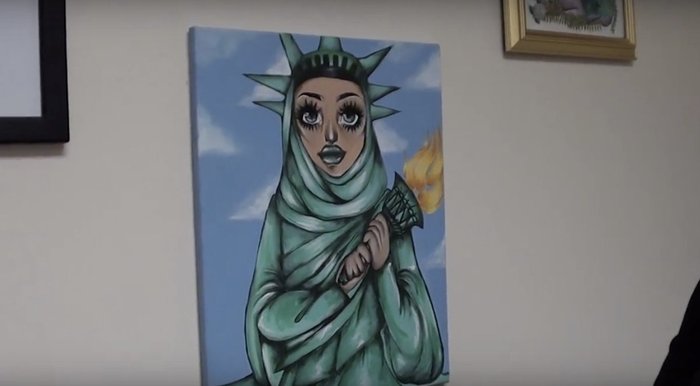Many predominantly Muslim countries observe the traditions of wearing hijab...
Opinion: World Hijab Day Promotes, Normalizes Islamism

February 1st is the World Hijab Day, an event created by Islamists in order to embellish a symbol of state and community oppression in many Middle Eastern and Southeast Asian countries.
In the Islamic religious traditions, the term “hijab” refers to clothing worn by women, especially when in sight of grown men who are not members of their family. Most strictly, this applies to head scarves that rest upon the shoulder and may or may not cover part of a woman’s chest along with her hair. It can also speak of face coverings, and more liberally, of other peculiarly Muslim female garments.

Traditionally, Hijab is a cultural means for Muslim women to protect their modesty and avoid inciting the lust of men who are not their husband.
Many predominantly Muslim countries observe the traditions of wearing hijab, especially in the Middle East. Head covering had been traditional for Muslim women as a matter of fashion for thousands of years, though it is the revival of Islamism since the 1970s that elevated scarves to a religious obligation often enforced by culture or the state.
Due to the failure of secular regimes in the Islamic World and the defeat of the Arab states in the 1967 Arab-Israeli War, Muslims were disillusioned with nationalism and secular political systems, and thought that traditional Islam would be the solution for all their social, economic, and political maladies. Those turbulent and soul-searching times led to the rise of the Muslim Brotherhood and other Islamic fundamentalist organizations in the Middle East. Promoting hijab was one of the ploys that helped Islamist activists tighten their grip on Muslim communities.
Later, in the last decades of 20th century, in fact, there was virtually less choice in the wearing of hijab. In some Muslim majority countries, women who refused were ostracized and might even have cause to fear for their safety.
The Islamic Revolution in Iran, in 1979 installed an absolute Muslim theocracy in power in Iran, and made it mandatory that all Iranian females must have traditional Islamic coverings in public. Hijab there became a symbol of government oppression and tyranny.
In an attempt to compete with Iran for the leadership of the Islamic World, Saudi Arabia put more restrictions on women. Even though the traditional Saudi cloak, abaya, was worn by almost all Saudi women before the Iranian Revolution, not to wear it became punishable by law in the Kingdom.
Today, the people of Iran see hijab as symbol of state oppression. The Iranian population is composed largely of young people under the age of 35, a very progressive, pro-Western demographic that rejects religious dictatorship and favors personal liberties.
Most moderate Muslims would prefer that hijab be viewed as a religious tradition which today’s Muslim women should be free to embrace or reject according to their personal preferences. Instead, they are imprisoned by it, forced to wear it whether they want to or not.
While there has already been some resistance to hijab by young people in the Middle East, Islamist activists in the West are promoting it as a form of women’s liberation.
Radical Muslims fan the flames of religious and cultural differences to divide rather than unite. By doing so, they engender hostility to immigration and refugees, and cry wolf about minority rights and discrimination. All this suits their sectarian agenda in the West; the Islamization of Muslim communities in the expatriates. Consequently, they presume the leadership of their Muslim communities that are in reality their victims.
Most Muslim communities have become a society-within-a-society in the West, and America that was once a melting pot is becoming a fragmentary society of religious and ethnic ghettos.
Amid all of this, some short-sighted Western governments are wasting the tax-payer money on promoting such Islamist events like the World Hijab Day, and legislators are jockeying to please Islamists in order to get the Muslim vote.
Maajid Nawaz, who heads the counter-extremism think-tank; the Quilliam Foundation in the United Kingdom, criticized the World Hijab Day and the institutional oppression of women through modesty culture. Nawaz added that while brave Iranian women risk all to remove hijab tyranny, UK officials are wasting tax-payer money by distributing free headscarves and encouraging women to wear hijab (https://www.dailymail.co.uk/news/article-5364753/Foreign-Office-faces-backlash-Hijab-Day-celebration.html).
The World Hijab Day is merely a ploy to promote and normalize Islamism in the West.
Hesham Shehab
Related articles at XPian News: https://xpian.news/2019/02/01/kenyan-supreme-court-hijab-christian-schools/

Hesham Shehab
Adjunct Faculty at College of DuPage, Formerly Adjunct Faculty at American University of Beirut and Pastor at Peace Lutheran Church Lombard, IL Name pronounciation: HI-shahm SHI-hab Hebrews 12: 4 & Philippians 1: 29




Comments are Closed